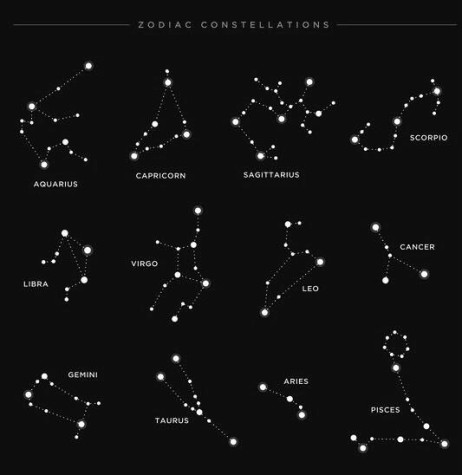Introduction to Astrology

There’s a lot of misinformation surrounding astrology, so consider me your personal guide.
The word astrology itself comes from a mix of astronomy and mythology, which is exactly what it is. Planets, constellations, comets, and asteroids all play a part in what is known as traditional Western astrology, and together with the 12 signs, they help put together the pieces of what the stars say about you.
In this issue, since it’s the first, we’ll start solely with the 12 signs and how they’re broken down. The signs are categorized by 3 things: element, mode or quality, and gender.
Each element has specific traits associated with it. For example, the fire signs are Aries, Leo, and Sagittarius. General qualities of the fire signs are outgoing, wild, or extroverted. The earth signs are Taurus, Virgo, and Capricorn. Earth signs are known for being stable, hard working, and goal-oriented. Next are air signs, Gemini, Libra, and Aquarius. Air signs are social, intellectual, and detached. Finally, there are the water signs Cancer, Scorpio, and Pisces. Water signs emotional, sensitive, and empathetic.
The three modes or qualities are mutable, cardinal, and fixed. Mutable signs (Gemini, Virgo, Sagittarius, and Pisces) are very flexible, intellectual, and great communicators.
Cardinal signs (Aries, Cancer, Libra, and Capricorn) are ambitious, strong-willed, and independent.
Fixed signs, (Taurus, Leo, Scorpio, and Aquarius) unlike mutable signs, are not very flexible and don’t like change. They’re focused, stubborn, and opinionated. Because of their fixed nature, they’re also very loyal and reliable.
Finally, the signs are also categorized by gender. The male signs are fire and air signs. These signs are more outspoken, opinionated, and wild. The female signs are water and earth signs. These signs are more introspective, calm, and conservative.
These are the absolute basics on the 12 signs of western astrology. Next week I’ll talk in more detail about each individual sign, and soon we’ll get to how to read a birth chart!
See you next week,
Karina












